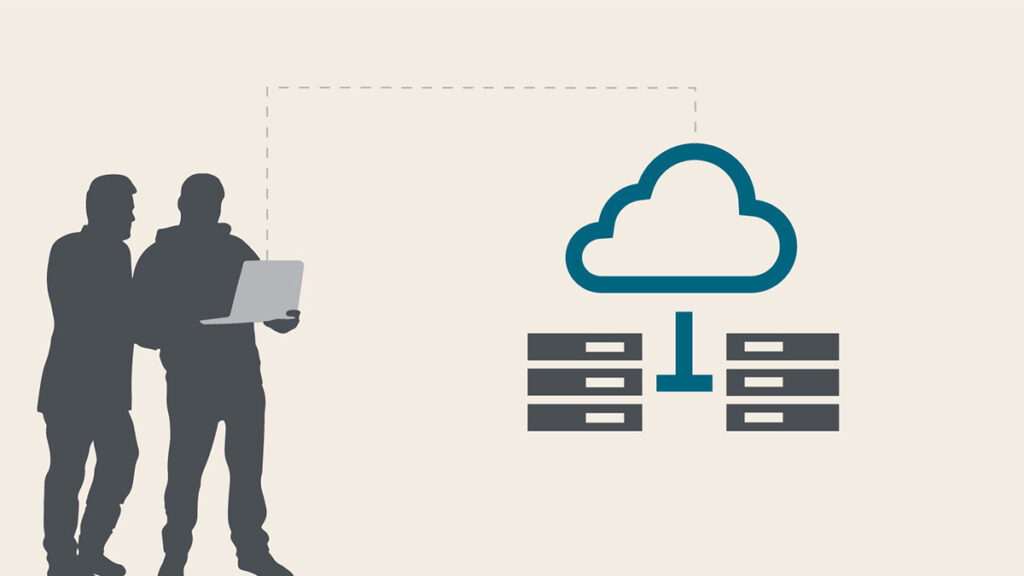Managed file transfer (MFT) teams are facing a once–in–a–generation data breach crisis. MFT is now a top ‘threat vector’ for organizations across regions and industries. This security concern has prompted a switch to a more secure cloud file transfer.
For all its benefits, cloud file transfer has its own set of challenges. Enterprises are under pressure to respond faster with more resilience. Yet the cloud-based journey is often littered with roadblocks. These four challenges top the list.
1. Limited in-house cloud resources & skills
Cloud file transfer is a notable shift from traditional MFT. MFT teams deal with a new platform with unique security concerns and data migration intricacies.
As McKinsey notes, “companies with high cloud aspirations don’t always have the right talent or culture to help them navigate complex cloud economics, operating-model changes, and the technical requirements needed to make cloud value a reality.”
If in-house staff aren’t well-versed in best practices and cloud architectures, the move to cloud file transfer becomes harder. The risk of security issues also increases.
The solution: Invest in a fully managed cloud MFT platform. Alongside secure technology, experts can help reduce risk and maximize ROI. All the while, you can optimize the allocation of your in-house resources.
2. An explosion in the volume of transactions
Cloud file transfer adoption can support the delivery of new digital experiences. This is beneficial from a competitive standpoint. Yet, transaction volumes can reach a tipping point where they start to affect performance and the user experience.
As transaction volumes increase, bandwidth can become limited — to the point of congested networks and file transfer delays.
In the context of cloud file transfers, where transactions happen simultaneously, the network can have an ever more challenging time keeping up.
The solution: Work with a managed cloud MFT provider that offers different subscription levels. As organizational requirements change, you can scale up without hassle.
3. Cybersecurity/data breach threats change governance needs
In 2022, 39% of businesses experienced a data breach in the cloud. Compare that to 35% the year before, and it’s easy to see why concerns have grown.
The increased risk of cybersecurity threats has sparked more than fear; it has prompted action. Regulatory bodies have introduced new and stricter compliance requirements to safeguard sensitive data. In light of this, IT frameworks have become more robust. SLAs have become more stringent.
Staying in sync with these evolving requirements is easier said than done. While battling the complex nature of the cloud environment, limited control over security configurations can make compliance even more complicated.
See also: Why MFT matters for enterprise compliance
The solution: Look for a cloud MFT platform backed by a broad range of certifications, auditability, and security standards. These off-the-shelf capabilities let you meet the most stringent requirements.
Also, ensure you have control over where your data resides and make sure the software is always up-to-date.
For more: How to support secure MFT amid the data breach crisis
4. Need to control costs while reaping cloud benefits
While enterprises want to get the most out of their cloud investment, they’re still cost-conscious. But when setting up and maintaining the cloud file transfer infrastructure, keeping these costs in check becomes hard.
Sometimes, a business may need to scale up on-the-fly to meet demand. Accommodating sudden spikes could mean increased capital expenditure. While this allows the company to scale, they make investments that only cater to a short period of increased workloads.
The solution: Cloud file transfer delivered as SaaS turns capital expenses into operational expenses. A pay-as-you-go subscription service offers a predictable monthly expenditure. You’ll have more flexibility when you need to scale while reducing the burden on your staff.
Aerospace and defense giant Textron found that moving its MFT capabilities to the cloud helped eliminate the manual work associated with a formerly on-premises platform.
“We no longer need to spend our days and nights remediating vulnerabilities and firefighting technical issues — with the Axway Cloud, we can focus on delivering value-added services to the business.”
- Al Gutierrez, IT Senior Architect at Textron
Read the full Textron case study here.
MFT operations with Axway Managed Cloud Services
When security and cloud optimization matter most, turn to Axway Managed Cloud Services for MFT. We provide best-in-class offerings to secure file data. All the while, we ensure cloud adoption saves costs and complies with requirements.
Textron is just one of many success stories. Axway teams helped them coordinate with partners, vendors, and data-owners to ensure application of the appropriate configurations and firewall rules.
Thanks to a phased approach, Textron moved 110 MFT accounts to the cloud in waves over seven months, and after a final month of fine-tuning they were ready to decommission the on-premises platform.
With Axway Managed Cloud Services for MFT, Textron gains highly available file transfer capabilities. “With Axway, we get the certainty of a guaranteed service-level agreement for MFT availability,” Gutierrez concludes.
Find more examples of companies succeeding with MFT in the cloud.
